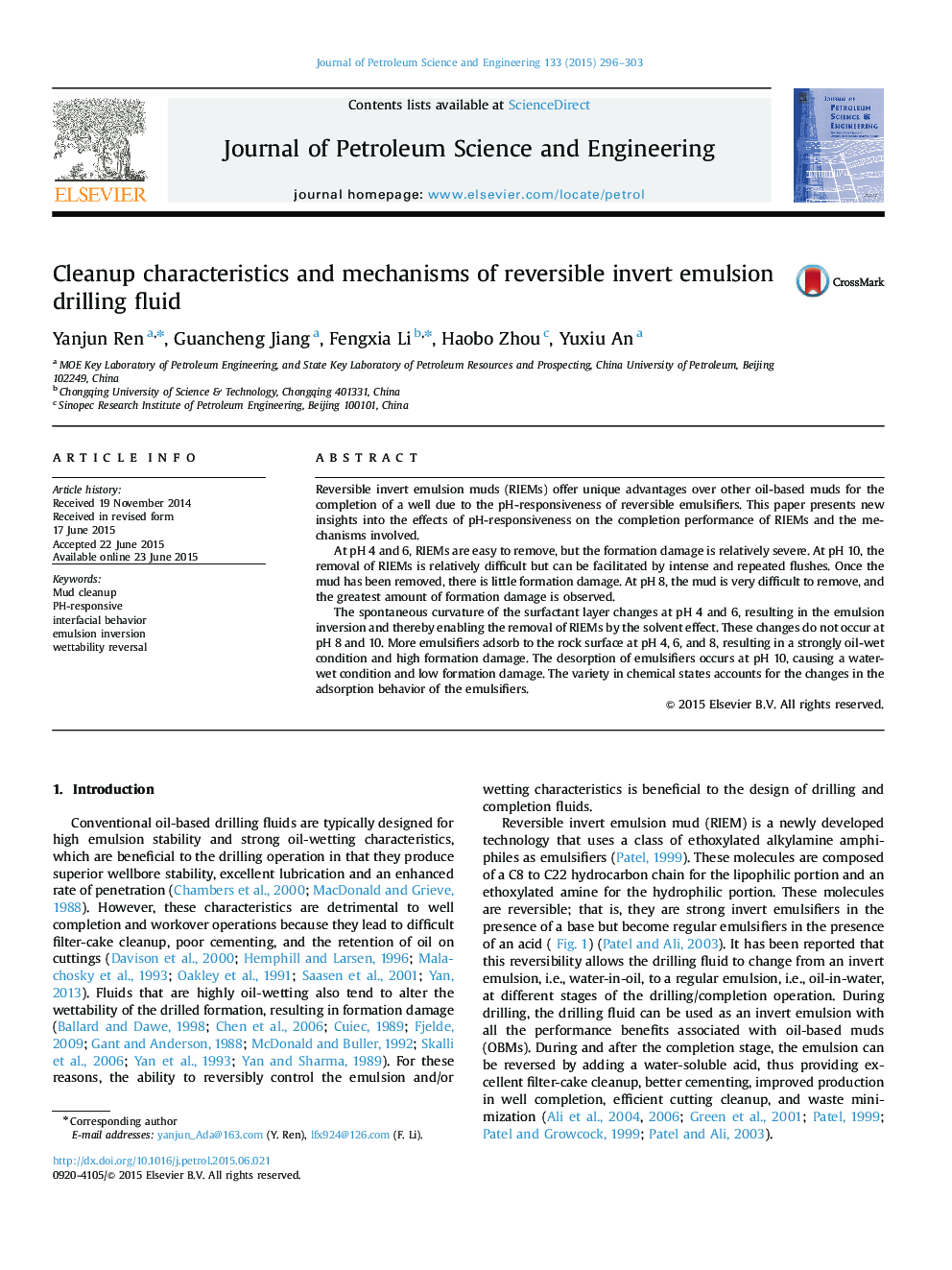| کد مقاله | کد نشریه | سال انتشار | مقاله انگلیسی | نسخه تمام متن |
|---|---|---|---|---|
| 1754722 | 1522808 | 2015 | 8 صفحه PDF | دانلود رایگان |
• The completion performance of RIEMs varies with pH conditions.
• pH 4–6 benefit the removal of RIEMs but damage the return permeability.
• pH 10 can restore a water-wet condition of a well drilled by RIEMs.
• The interfacial behaviors of emulsifiers control the completion performance of RIEMs.
• The pH-dependent chemical states of emulsifiers control their interfacial behavior.
Reversible invert emulsion muds (RIEMs) offer unique advantages over other oil-based muds for the completion of a well due to the pH-responsiveness of reversible emulsifiers. This paper presents new insights into the effects of pH-responsiveness on the completion performance of RIEMs and the mechanisms involved.At pH 4 and 6, RIEMs are easy to remove, but the formation damage is relatively severe. At pH 10, the removal of RIEMs is relatively difficult but can be facilitated by intense and repeated flushes. Once the mud has been removed, there is little formation damage. At pH 8, the mud is very difficult to remove, and the greatest amount of formation damage is observed.The spontaneous curvature of the surfactant layer changes at pH 4 and 6, resulting in the emulsion inversion and thereby enabling the removal of RIEMs by the solvent effect. These changes do not occur at pH 8 and 10. More emulsifiers adsorb to the rock surface at pH 4, 6, and 8, resulting in a strongly oil-wet condition and high formation damage. The desorption of emulsifiers occurs at pH 10, causing a water-wet condition and low formation damage. The variety in chemical states accounts for the changes in the adsorption behavior of the emulsifiers.
Journal: Journal of Petroleum Science and Engineering - Volume 133, September 2015, Pages 296–303
